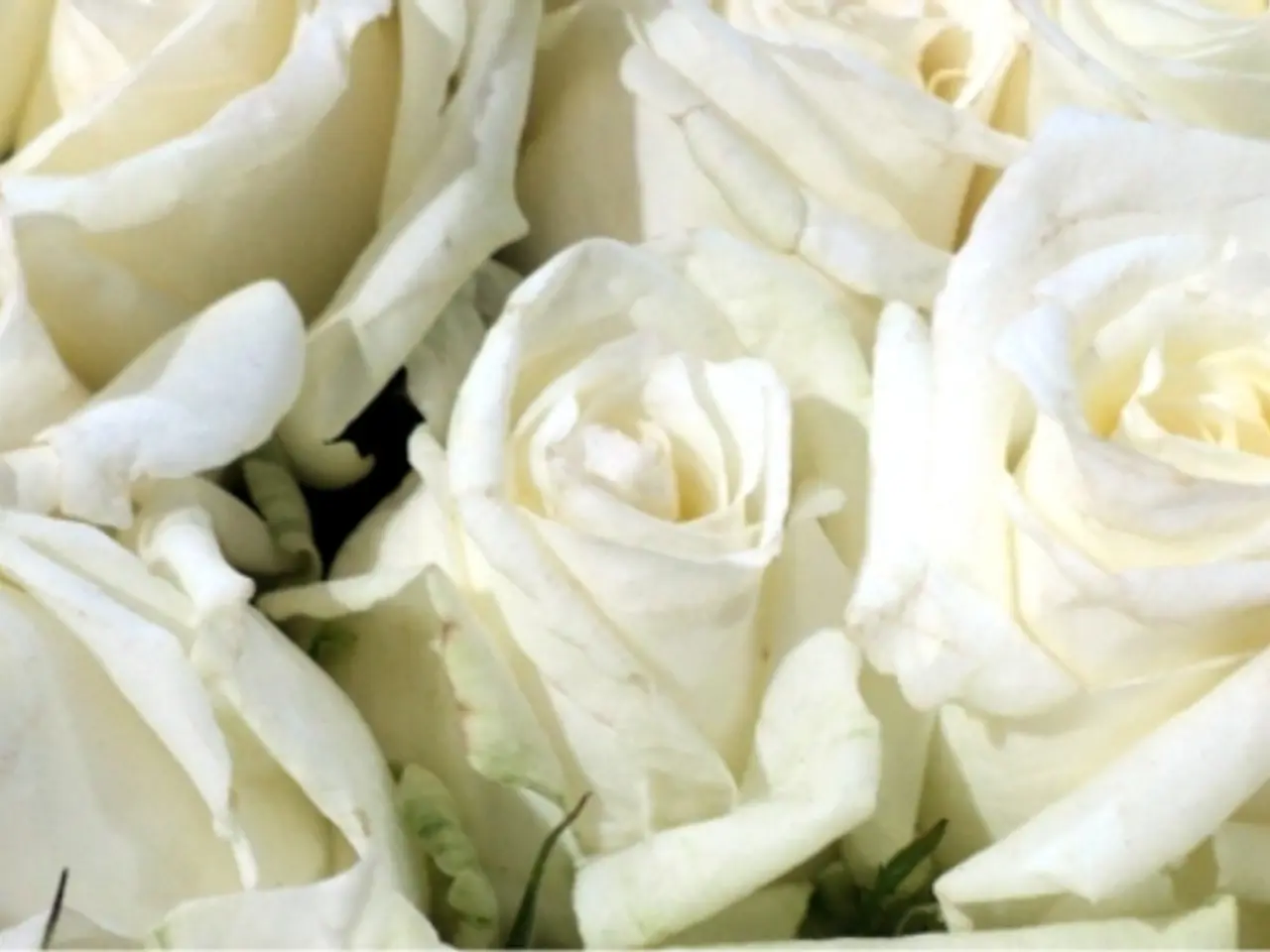Method for Rose Trimming
In the world of gardening, pruning roses is an essential task that not only maintains their health and vitality but also enhances their appearance and promotes new blooms. Different types of roses require specific pruning techniques and timings. Here's a guide on how to prune various rose types:
## Pruning Techniques by Rose Type
### 1. **Modern Shrub Roses** - **Timing:** Prune in late winter or early spring, but can lightly trim in summer. - **Technique:** Remove deadwood and diseased branches. Cut back by about one-third to maintain shape and promote new growth. Deadhead spent blooms to encourage repeat flowering.
### 2. **English Roses (Also Known as David Austin Roses)** - **Timing:** Same as modern shrub roses. - **Technique:** Similar to modern shrub roses. Remove dead or diseased wood, and cut back by about one-third to promote new growth and flowering.
### 3. **Bush Roses** - **Timing:** Early spring, but deadhead throughout the growing season. - **Technique:** Remove deadwood and cut back stems to about one-third. Deadheading is crucial for repeat bloomers.
### 4. **Patio Roses** - **Timing:** Prune in late winter or early spring, with light trimming in summer. - **Technique:** Minimal pruning is needed; remove deadwood and trim back to maintain shape. Deadhead spent flowers to encourage new blooms.
### 5. **Rambling Roses** - **Timing:** After the main flowering period, usually in late spring or early summer. - **Technique:** Remove dead or diseased wood. For ramblers, prune right after they finish blooming. You can also trim out some of the older, thicker canes to encourage new growth. Lightly thin lateral shoots to improve air circulation.
### 6. **Species Roses** - **Timing:** Minimal pruning is required; prune after flowering if necessary. - **Technique:** These roses are less demanding and require only removal of dead or diseased wood. They can benefit from light trimming to maintain shape but should not be heavily pruned.
### 7. **Climbing Roses** - **Timing:** Prune after the second flowering period, usually in late summer or early fall, with more substantial pruning in winter for remontant types. - **Technique:** Remove dead or diseased wood. For remontant climbers, prune after the second flowering in late summer, and then do a more thorough pruning in winter, cutting back to just above a bud. For once-flowering climbers, remove dead canes after blooming but avoid cutting back live stems.
## General Tips - **Use clean, sharp tools** to prevent spreading disease and to make cuts cleanly. - **Cut at a 45-degree angle** just above an outward-facing bud to promote new growth and prevent water from collecting on the cut. - **Deadhead regularly** to encourage repeat blooming and maintain appearance.
Pruning is a delicate balance between promoting new growth and maintaining the structure of the rose. Over-pruning can stress the plant, leading to reduced flowering and increased susceptibility to disease.
Monty Don demonstrates pruning and training climbing roses to encourage the production of more flowers. Remove closely positioned stems that might rub or compete for space. Species roses, like ramblers, are robust and vigorous, with simple, open flowers that are great for pollinating insects. Examples include Rosa complicata, Rosa moyesii, and Rosa glauca. Ashley Edwards demonstrates pruning a floribunda rose in winter.
*This article has been checked for horticultural accuracy by Oliver Parsons.*
Adopting the right pruning techniques is crucial in maintaining a healthy and vibrant lifestyle, not just for roses, but also for home-and-garden enthusiasts who enjoy gardening. The variety of rose types, each requiring unique pruning methods, adds a layer of depth to the home-and-garden lifestyle.




